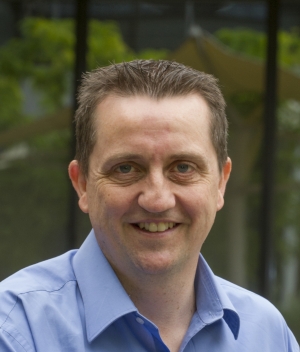New lab up for the fight
Research news
Ever since they were established to fight “foot and mouth” and “blue tongue” diseases threatening Australia’s cattle and sheep in the 1960s, CSIRO’s animal health laboratories have been at the cutting edge of infectious disease research.
In late 2012, researchers at the Australian Animal Health Laboratory (AAHL) developed a world-first vaccine for the Hendra virus.
This week, a unique world class Biosecure Immunology Laboratory has been launched at AAHL that is set to play a key role in the continuing battle against emerging infectious diseases – with potential for developing new treatments for diseases such as influenza and the new Middle Eastern Respiratory Syndrome (MERS).
The new laboratory, within the quarantined biosecure area of AAHL is one of the world’s most sophisticated high-containment laboratories. Its high-end flow cytometry equipment, obtained as the result of a CSIRO and Deakin collaboration, will enable real-time analysis of immune response mechanisms in infected living cells.
The laboratory was officially opened this week by Ms Sarah Henderson MP, Federal Member for Corangamite, who said that it “is a wonderful investment in our Geelong culture of industry, research and innovation.”
“With the current pressures on traditional manufacturing, the Government is very focussed on advanced manufacturing, science and innovation in the area,” Ms Henderson said.
Federal Member for Corio, Mr Richard Marles MP, was also at the launch.
Dr Kurt Zuelke, Director of AAHL, noted that the laboratory will help researchers identify the immune mechanisms employed by animal hosts at the cellular level.
“Our researchers are world renowned for their work with zoonotic agents – those that can pass from animals to people – and, with this new facility, we can now compare the immune responses of different animal species, including humans, to the most pathogenic infectious agents”.
He explained that by increasing our understanding of how pathogens affect different host animals at a cellular level, researchers hope to harness a host’s successful immune mechanisms and develop new therapeutic approaches to viral infection.
Dr Andrew Bean, Group Leader of Immunology at AAHL, said that emerging infectious diseases, often developing in wildlife populations and transmitted through travel and transport, will continue to pose problems.
“We need to undertake comparative studies of the natural hosts, which are resistant, and the transmission hosts, which are susceptible, to help us identify what’s going on. We need to understand inappropriate responses so that we can develop strategies that allow us to intervene or correct these responses, to protect wildlife, domestic stock and human health.”
Deakin’s Deputy Vice-Chancellor (Research) Professor Lee Astheimer congratulated the researchers from CSIRO and Deakin who obtained the funds for the project, and who are collaborating on a range of projects impacting both animal and human infectious disease. These collaborations have been core to the development of the Geelong Centre for Emerging Infectious Disease (GCEID), which is a research partnership between Deakin, CSIRO, AAHL and Barwon Health.
“There is a real need for cellular level immunology research examining host-viral interactions and this biosecure facility is critical for that to occur. The new lab will play an important role as a resource for the work of GCEID,” Professor Astheimer said.
She added that Deakin and the AAHL researchers have been working closely together over the past five years, with a number of joint projects, sharing facilities and co-supervision of PhD students. In fact, Deakin has recruited additional academics to help facilitate this work in the areas of wildlife immunology and microfluidic diagnostics.
“AAHL, particularly with this new facility, has the capacity, expertise and infrastructure to make important progress developing new therapeutics, antivirals and vaccines. We hope this will seed commercial biotech companies and jobs in Geelong,” Professor Astheimer said.
The state-of-the-art equipment, worth $775,000, was funded through an ARC “Linkage, Infrastructure, Equipment and Facilities” (LIEF) grant, worth $520,000, with the balance contributed by Deakin, CSIRO and the University of Georgia, USA.
The Director of Deakin's Molecular and Medical Research SRC, Professor Alister Ward, led the successful LIEF bid. He also led the development of the strong collaboration between the Deakin Medical School and AAHL, including joint appointments, students, projects and publications.
AAHL plays a vital role in maintaining Australia’s capacity to quickly diagnose exotic and emerging animal diseases that threaten livestock, aquaculture species, wildlife and people. Over the past five years, nearly $50 million has been spent on upgrading their world-class facilities.
Share this story
 Deakin's Professor Alister Ward led the successful bid for the ARC grant.
Deakin's Professor Alister Ward led the successful bid for the ARC grant.
